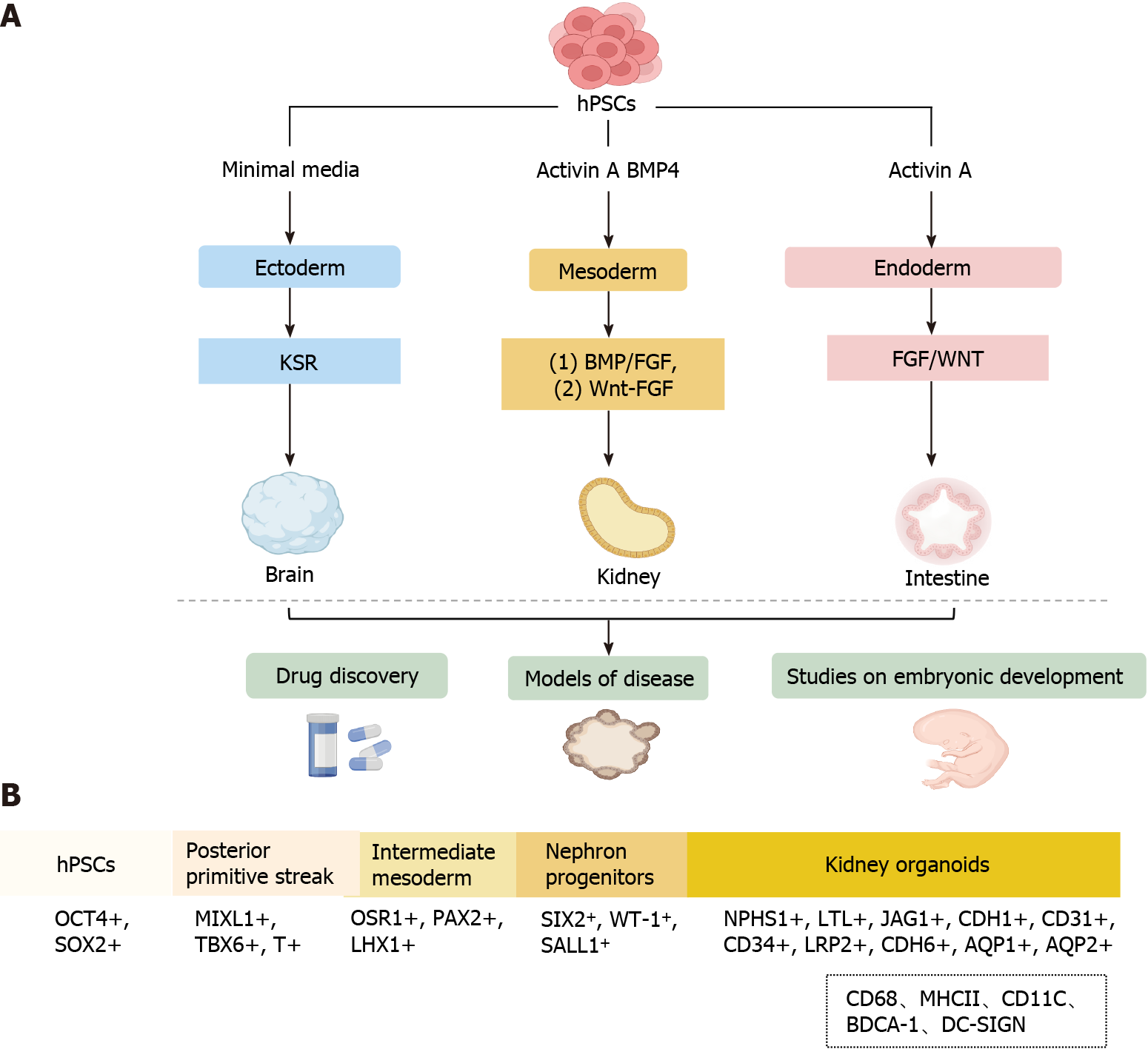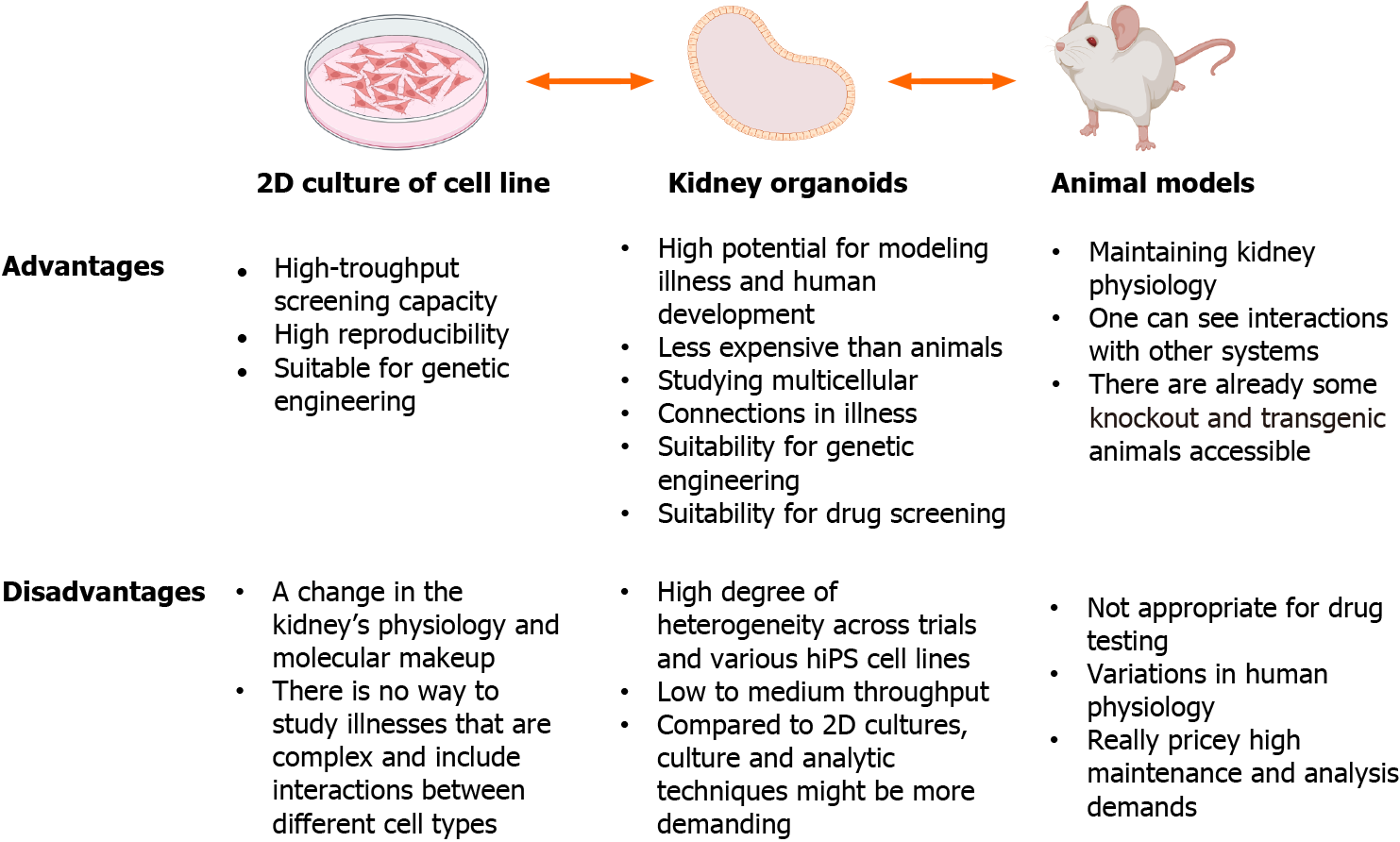Copyright
©The Author(s) 2024.
World J Stem Cells. Feb 26, 2024; 16(2): 114-125
Published online Feb 26, 2024. doi: 10.4252/wjsc.v16.i2.114
Published online Feb 26, 2024. doi: 10.4252/wjsc.v16.i2.114
Figure 1 Overview of human pluripotent stem cell-derived organoids.
A: Schematic signaling of endodermal, mesodermal, and ectodermal triodermal organoids derived from human pluripotent stem cells (hPSCs) by addition of different inducing factors; B: The process of generating hPSCs-derived kidney organoids involves the following consecutive stages: Generation of the posterior primitive streak, intermediate mesoderm, nephron progenitor cells, and kidney organoids. The dotted box shows immune cells not currently induced in kidney organoids in vitro. hPSCs: Human pluripotent stem cells; HSR: Knockout serum replacement; MHCII: Major histocompatibility complex; BDCA: Blood dendritic cell antigen; BMP: Bone morphogenetic protein; FGF: Fibroblast growth factor.
Figure 2 Embryonic kidney development in vivo.
The origins of metanephric mesenchyme (MM) and ureteric bud (UB) are spatially and temporally distinct (formed at E8.5). The UB is formed by the anterior intermediate mesoderm extending caudally forwards, whereas the MM is formed by the posterior intermediate mesoderm retaining its caudal tail backwards (formed at E10.5).
Figure 3 The benefits and drawbacks of using kidney organoids to simulate human illness are underlined.
2D: Two-dimensional; hiPS: Human induced pluripotent stem.
- Citation: Long HY, Qian ZP, Lan Q, Xu YJ, Da JJ, Yu FX, Zha Y. Human pluripotent stem cell-derived kidney organoids: Current progress and challenges. World J Stem Cells 2024; 16(2): 114-125
- URL: https://www.wjgnet.com/1948-0210/full/v16/i2/114.htm
- DOI: https://dx.doi.org/10.4252/wjsc.v16.i2.114











